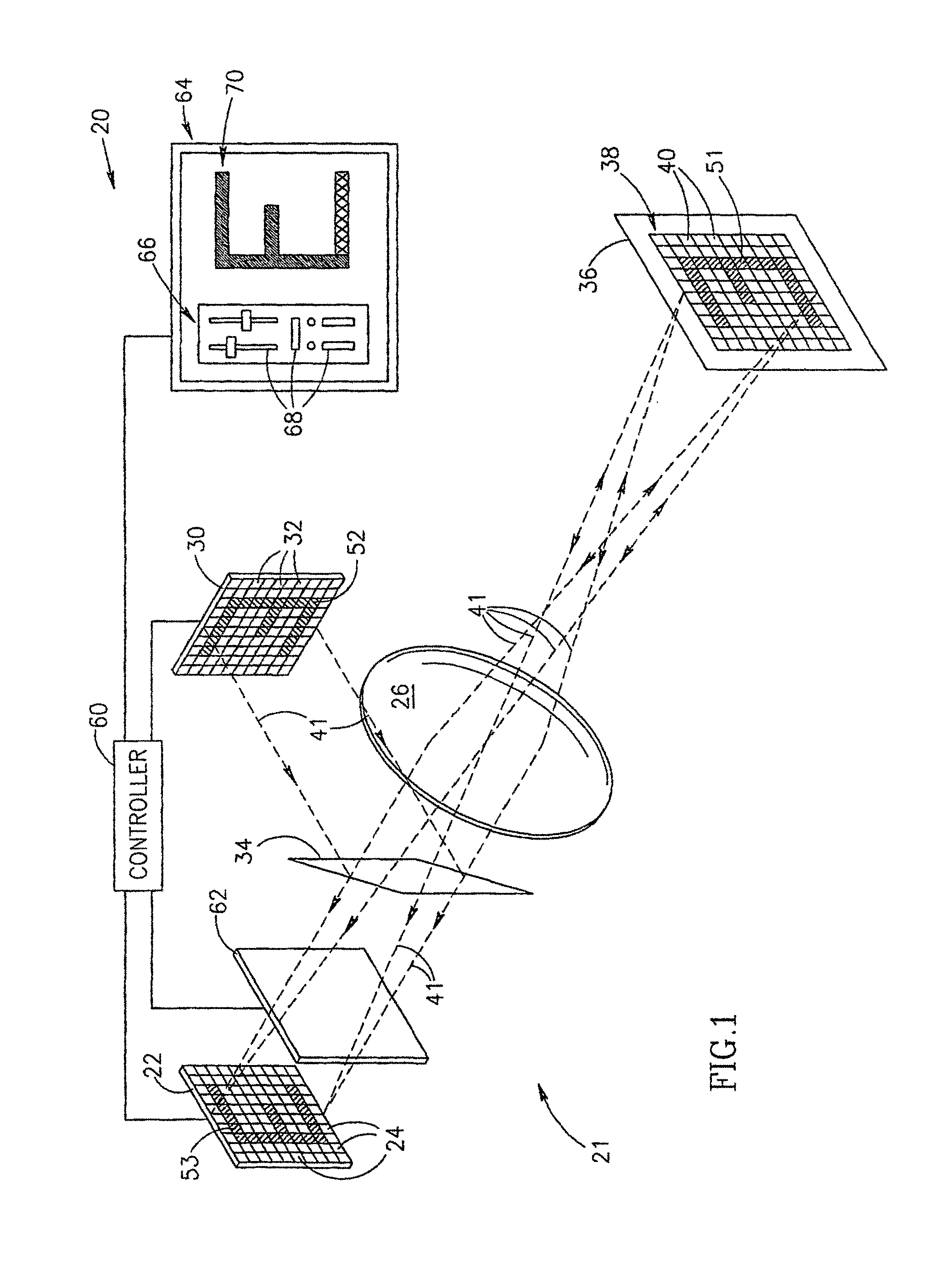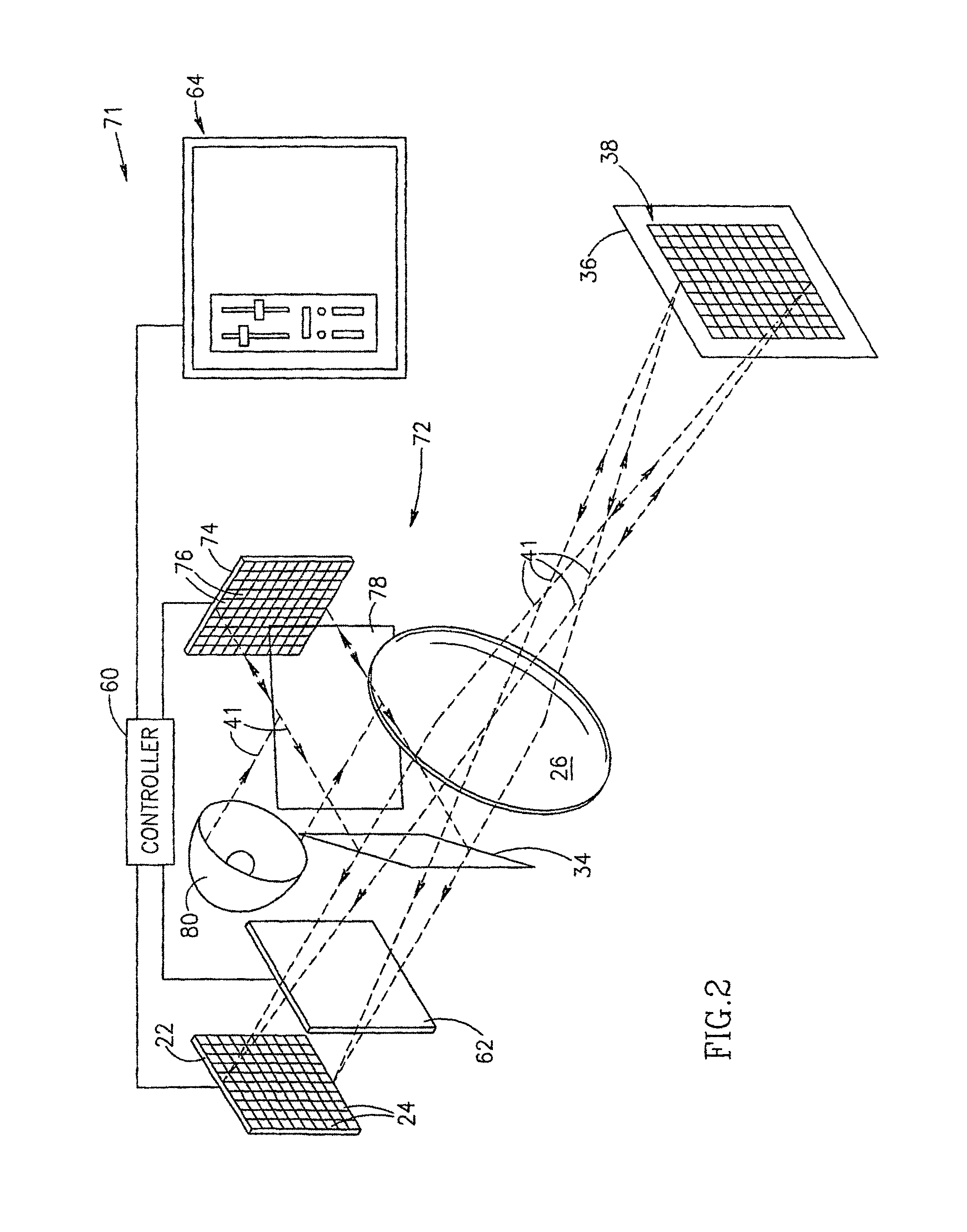Camera having a through the lens pixel illuminator
a technology of pixel illumination and camera, applied in the field of illumination of the imaged scene, can solve the problems of limiting contrast, substantial differences in the intensity of reflected light reaching the camera, and a relatively complicated and arduous task to achieve proper illumination, so as to reduce the variability of brightness values
- Summary
- Abstract
- Description
- Claims
- Application Information
AI Technical Summary
Benefits of technology
Problems solved by technology
Method used
Image
Examples
Embodiment Construction
[0076]FIG. 1 schematically shows a camera 20 comprising an illumination system 21, in accordance with an embodiment of the present invention.
[0077]Camera 20 comprises a photosurface 22, such as a CCD or CMOS light sensitive surface, having pixels 24 and optics represented by a lens 26 for focusing an image of a scene on photosurface 22. Whereas, in FIG. 1 (and in FIGS. 2 and 3 discussed below) a single lens 26 represents the optics, the optics may comprise any suitable optical system, which may have a plurality of lenses and optical elements, as known in the art, for focusing images on photosurface 22.
[0078]Illumination system 21 comprises a pixelated illuminator 30 having a plurality of light providing luxels 32. Pixelated illuminator 30 is boresighted with photosurface 22 using an appropriate beam splitter 34 and optical elements (not shown) as might be required, so that optimally, a virtual image of pixelated illuminator 30 is substantially coincident with photosurface 22. It is ...
PUM
 Login to View More
Login to View More Abstract
Description
Claims
Application Information
 Login to View More
Login to View More - R&D
- Intellectual Property
- Life Sciences
- Materials
- Tech Scout
- Unparalleled Data Quality
- Higher Quality Content
- 60% Fewer Hallucinations
Browse by: Latest US Patents, China's latest patents, Technical Efficacy Thesaurus, Application Domain, Technology Topic, Popular Technical Reports.
© 2025 PatSnap. All rights reserved.Legal|Privacy policy|Modern Slavery Act Transparency Statement|Sitemap|About US| Contact US: help@patsnap.com



